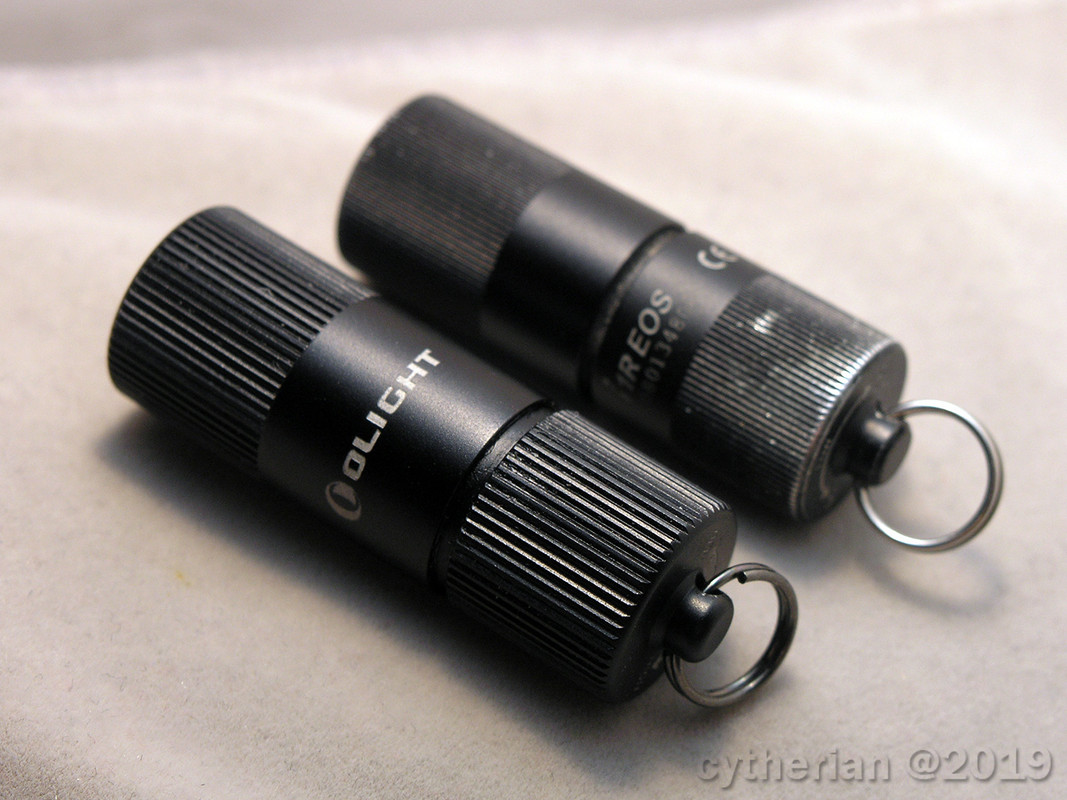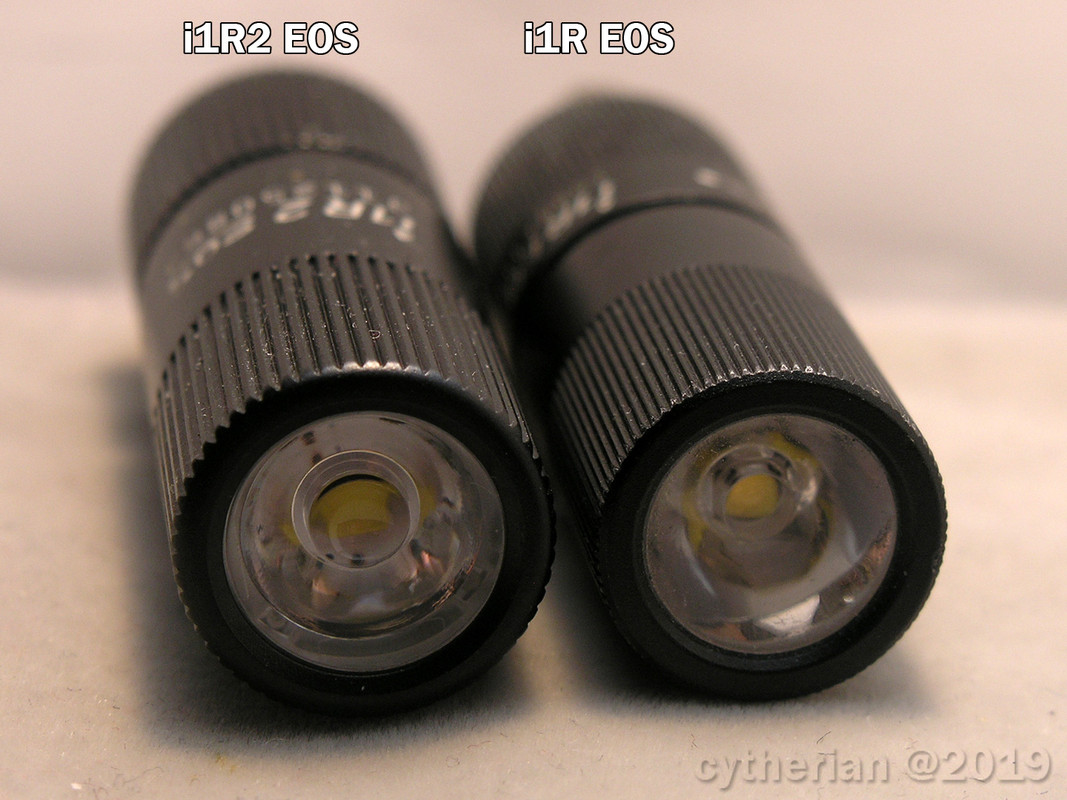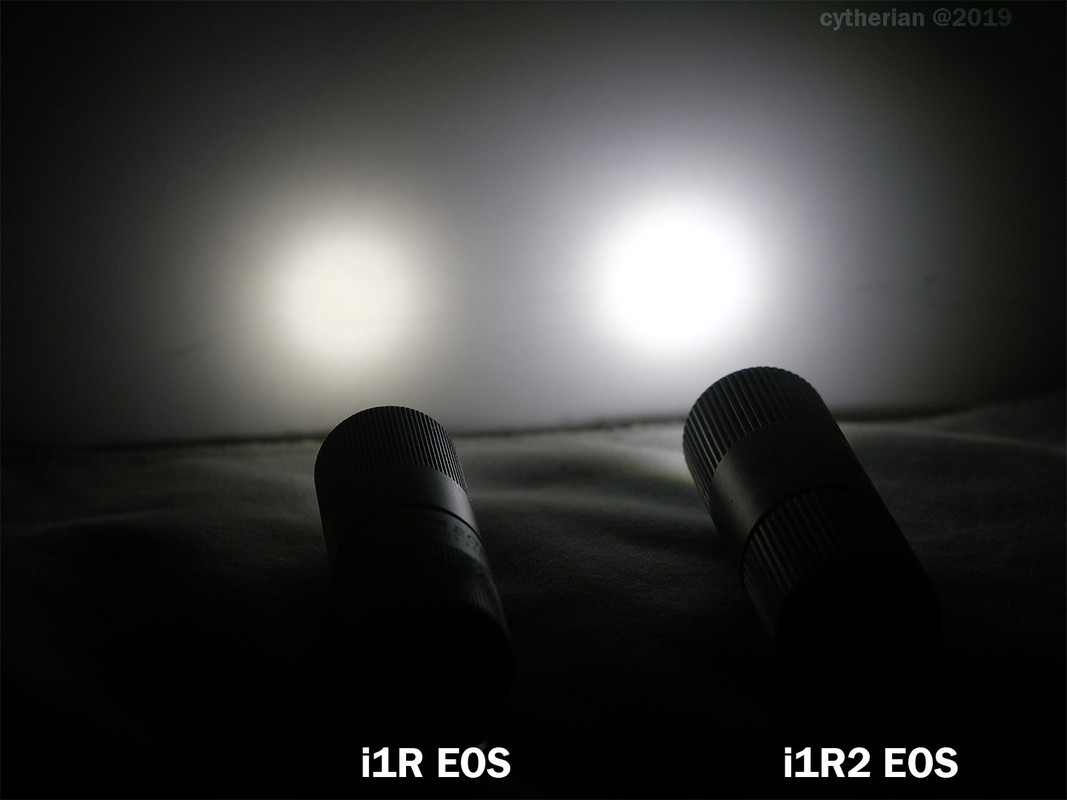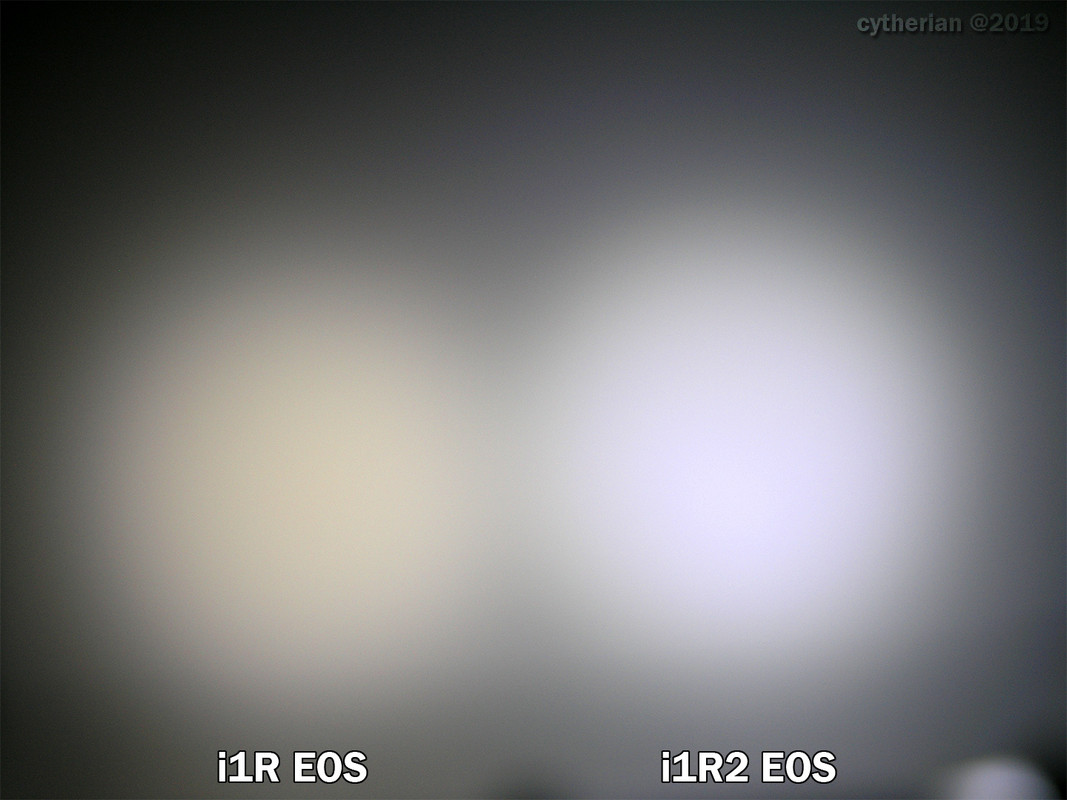10180 huahui new energy
Without LVP its a disposable light unless u take it apart to swap the bat ![]()
10180 huahui new energy
Without LVP its a disposable light unless u take it apart to swap the bat ![]()
Nice find, PBWilson!
Any idea if the disassembly shown in the pictures is possible reversibly, or if the internals were from a not-yet-assembled or destroyed unit?
Why do you say that?
Can the presence of LVP be verified without measuring voltage?
as for being disposable? even if it dies completely one day I have to assume it has more than enough cycles in it to get me to another even better light sometime down the road. I’ll use the hell out of it and gladly give them as gifts.
Especially at this price.
I look at it this way — the cost of the light is far cheaper than the effort to replace the battery. It is disposable… unless someone wants to have a practice run at soldering with it. Would be curious to see if anyone has tried modifying.
Its disposable because accidental activation to 0v a few times will kill the bat
Its not the best idea to discharge li-on bats to 0v, nor recharge em back up afterwards either
Dont see the problem really, by the time the battery is worn out u probably have something else…
these little 10180 lights are pretty generic
you can buy replacement 10180 cells that are usually unprotected
Klarus sells a protected version
I dont own the Olight version, and its cool the head is captive, but Im confident it can be removed so you could replace the battery
there is NO LVP built into these lights
you Can buy batteries w LVP
> Does anyone know the CRI on both of these lights?
they are low CRI, that means about 70CRI Ra, with negative CRI R9 (red spectrum)
IF they were High CRI, it would be mentioned in the marketing material
Olight only makes One High CRI light I can think of, and it has terrible tint rainbow (xp-g3 S1 Mini)
Maybe because the real cost of throwing things away is not being accounted for.
After unscrewing the head to reveal the charging port, I haven’t managed to keep the head centered (it constantly angles off to one side or another), and haven’t succeeded in getting the next threaded section to catch. It’s like the spring or something else prevents it.
Interesting note: the threads are entirely hidden and can’t be seen even after revealing the charging port. Aside from looking neater, it might keep the threads cleaner.
And yes, definitely low CRI.
Yeah have it turn on by accident and have that 10180 drain down to 0v a time or two
See how that works (hint for reviewers since u get free lights anyways)
Some comparative photos. Hopes this helps illustrate the differences. Olight i1R EOS has been on car key fob chain for 1 year. Olight i1R2 EOS is brand new.




Low mode comparison

High mode comparison
Interesting. Guess I just assumed all half decent companies/lights have that protection built in. Is it confirmed that there is no LVP in this light?
I will confirm that an extra half turn, or so, after it’s turned off is enough to make sure it can’t turn on by being pressed down, and still plenty secure to remain closed and probably water tight.
Bearbreeder I don’t see much risk of it turning on accidentally. I tried holding one end and rubbing the other end along clothing or floor carpeting as hard as I could, and it doesn’t rotate. And I don’t bother rotating much after it turns off, maybe just 1/8 of a turn.
xevious Thanks for the nice comparison pics! The scratched anodization isn’t as bad as I had feared, but still not great. It would be nice to see what clear anodization would look like. Too bad the new one has a colder color temperature.
nydude Someone earlier in this thread reported that Olight Australia confirmed it has LVP. My questions on how to verify this have gone unanswered.
I haven’t had any issues with accidental activation on my i1R EOS. There is a fair amount of travel after circuit is disconnected that doesn’t appear to compromise protection against dust & moisture ingress. The friction is “just right,” whereby it’s not a pain to turn, yet it’s snug enough not to accidentally rotate.
Also, this isn’t a high usage light. It’s meant for momentary use on occasion. As such, the longevity should be considerable. 10 years? Even then, the advances in miniaturization and LED efficiency will make it vastly obsolete. If you look at RovyVon, a company that specializes in miniature EDC flashlights, you’ll see they’ve just recently made an intentional design for proprietary battery replacement. That may eventually happen for the i1R. But all things considered, a 10 year lifespan isn’t “disposable”. Otherwise, we’d consider all electronics disposable simply because they eventually become obsolete.
xeviousThanks for the nice comparison pics! The scratched anodization isn’t as bad as I had feared, but still not great. It would be nice to see what clear anodization would look like. Too bad the new one has a colder color temperature.
You’re welcome. Yeah, it’s actually not that bad. It’s mostly caused by rubbing against the clasp that holds the light. If I used a plastic one, or coated the steel with some plastic, it would probably look much better. But again, it’s car key fob, not house keys… Surrounded by lots of metal, the body would surely get nicked up eventually, as does happen with all anodized flashlights over time. Some more resistant than others.
I just assumed all half decent companies/lights have that protection built in. Is it confirmed that there is no LVP in this light?
your assumption is just wishful thinking
without any supporting evidence
(a post by someone that says a salesman told them something, is NOT evidence, its hearsay)
Show me where it says in writing that the light has built in LVP, otherwise I would assume it does not.
Show me where it says in writing that the battery has built in LVP, otherwise I would assume it does not.
imo, very very very few lights have built in Low voltage protection
imo, only lights that DO have LVP will state that fact in writing
A twisty is less likely to turn on accidentally than a button switch
But i have had accidental turn ons before going back to the old AAA maglite
It happens, and if it does and there is no LVP …
Well time to take it apart and see if u can stuff another 10180 in there ![]()
your assumption is just wishful thinking
without any supporting evidence
(a post by someone that says a salesman told them something, is NOT evidence, its hearsay)Show me where it says in writing that the light has built in LVP, otherwise I would assume it does not.
Show me where it says in writing that the battery has built in LVP, otherwise I would assume it does not.imo, very very very few lights have built in Low voltage protection
imo, only lights that DO have LVP will state that fact in writing
When there’s no LVP (low voltage protection), don’t you witness significant dimming effect? Light will try to run until battery is completely exhausted? And if there’s LVP, it will cut out, not allow a lower output and simply stay shut off to protect the battery, correct? I have charged my i1R EOS perhaps 3 times. One time, it simply shut off while I was using it. It didn’t seem to dim. I then charged it up and it worked fine.
EDIT: I decided to conduct a test. I let the light run down. This time it began to dim. It did not exhibit LVP. The contact in mine is a little flaky. In the early days of ownership, I may have experienced that and misinterpreted it. It’s safe to say the i1R and i1R2 both lack LVP.
When there’s no LVP (low voltage protection), don’t you witness significant dimming effect? Light will try to run until battery is completely exhausted? And if there’s LVP, it will cut out, not allow a lower output and simply stay shut off to protect the battery, correct?
I tried testing this behavior with the i1R 2. It got very dim, likely sub-lumen, but did not shut off.
When there’s no LVP (low voltage protection), don’t you witness significant dimming effect? Light will try to run until battery is completely exhausted?
yes
and you can confirm this by measuring battery voltage, which will be above 0 volts.
the danger w unprotected ICR chemistry is if discharged below 2.5v, they can overheat during the next recharge… so… charge under adult supervision… do NOT leave on charger unattended overnight
other chemistries such as IMR and INR are less dangerous when overdischarged.
so, we need to learn if the battery is unprotected ICR, as that is the risky one, IF overdischarged, and IF it overheats upon recharging
but these little twisty 10180 lights dont come on at maximum when you press the head after unscrewing, they come on at minimum… so instead of draining the battery in 15 minutes, it can go for several hours…
in any case, if the light gets dim, recharge it on a fireproof surface, and under your supervision… touch the light after a few minutes on charge, if it is not too hot to touch, not smoking, and not venting with fire…
dont worry, be happy ![]()
And if there’s LVP, it will cut out, not allow a lower output and simply stay shut off to protect the battery, correct?
yes
and you can confirm this by measuring battery voltage, which will read 0 volts. Total Zero!
that is because the protection circuit on the battery itself has tripped
if you put it on a charger for a few seconds and then measure the battery, it will be more than 0 volts. Meaning the protection circuit has been reset.
it is possible for the light to get dim before a protection circuit in the battery is triggered
it is also possible to trigger a protection circuit immediately, when using high mode with a depleted cell, that will just blow its fuse when asked to provide maximum power
Ive never heard of a fire from a 10180 battery… try not to worry
enjoy your cute little light
===
areas for further investigation
learn how to access the battery in your little Olight, so you can use a DMM to check voltages.
is the battery unprotected ICR (most vulnerable to overheating on recharge after overdischarge)
or unprotected IMR or INR (relatively safer, best to recharge promptly if overdischarged, monitor heat during charging, as with ICR)
do you want to buy a protected Klarus 10180?
is protection important in these lights?
does the Klarus cell fit the Olight? (protected cells tend to be a little longer)
I tried testing this behavior with the i1R 2. It got very dim, likely sub-lumen, but did not shut off.
Well that’s a serious bummer. Frankly, I’d gladly have paid $5 more for LVP, which would’ve been within cost reason for a light of this nature. I also did the same test and confirmed that the original i1R EOS also lacks LVP.
the danger w unprotected ICR chemistry is if discharged below 2.5v, they can overheat during the next recharge… so… charge under adult supervision… do NOT leave on charger unattended overnight
I didn’t know this. I was aware that there would be battery damage, and that with 18650 that can present some challenges. But overheating on subsequent charging… surprising, but understandable now. In fact, I had a couple of old Tenergy AA NiMH batteries I’d been putting to use in “junker” lights and in one case, the cell has been run down to the point of a dimming LED. The Olight S15 seemed to have weak LVP. The light wouldn’t let it run to complete exhaustion, but it was still lower than I’d have expected. After recharging that cell, it was hot to the touch. Not scalding, but very uncomfortable to hold onto with a firm grip. The cell label shows 1.2V, while the charge reading afterward was 1.4v. Not sure if Nitecore i4 charger was misreading the battery, or the battery is simply damaged.
The cell label shows 1.2V, while the charge reading afterward was 1.4v. Not sure if Nitecore i4 charger was misreading the battery, or the battery is simply damaged.
dont worry, it is normal
my eneloops also come off the charger at about 1.4v, even though nominally they are called 1.2v batteries
similarly, the LiIon cells we use in flashlights are nominally 3.7v power sources, and come off the charger at 4.1v. That includes the 10180 LiIon
if you charge when the light gets dim, all will be well
with a DMM you could confirm the voltage of the battery is not below 2.5v
and then recharge with confidence
also, it is better for LiIon to be recharged when half empty, which is at about 3.7v
it is not good to drain them all the way down to 2.5v frequently, in fact, you should really recharge before they go below 3v imo
anyway, you light has not failed you, dont worry ![]()
> The Olight S15 seemed to have weak LVP
LVP applies to LiIon, not to NiMh
what you may be observing is that there is a certain minimum power requirement for a circuit to work